
| Самолеты (сортировка по:) | |||||
| Страна | Конструктор | Название | Год | Фото | Текст |
Rumpler 6B1/6B2

|
Страна: Германия Год: 1916
Fighter |
| Rumpler - 6A2 - 1916 - Германия | <– | –> | Rumpler - C.III/C.V - 1916 - Германия |
 |
J.Herris - Rumpler Aircraft of WWI /Centennial Perspective/ (11) |
| The prototype Rumpler 6B1 after armament was fitted |
 |
J.Herris - German Seaplane Fighters of WWI /Centennial Perspective/ (2) |
| The prototype Rumpler 6B1 after armament was fitted, which was a single machine gun on the port side with 750 rounds of ammunition. |
 |
J.Herris - Rumpler Aircraft of WWI /Centennial Perspective/ (11) |
| Rumpler 6B1 Marine #751 after camouflage was roughly applied at Zeebrugge. The aircraft has also gained a national insignia on the fuselage. This is how the aircraft looked when flown on operations. |
 |
J.Herris - Rumpler Aircraft of WWI /Centennial Perspective/ (11) |
| Rumpler 6B1 Marine #1042 in standard late-war naval camouflage. |
 |
J.Herris - Rumpler Aircraft of WWI /Centennial Perspective/ (11) |
| Rumpler 6B1 Marine #1051 of the second 6B1 production batch. |
 |
В.Обухович, А.Никифоров - Самолеты Первой Мировой войны |
| Румплер 6B |
 |
J.Herris - Rumpler Aircraft of WWI /Centennial Perspective/ (11) |
| Rumpler 6B2 Marine #1063 in standard late-war naval camouflage and markings with three white circles added as a tactical marking. |
 |
J.Herris - Rumpler Aircraft of WWI /Centennial Perspective/ (11) |
| Rumpler 6B2 Marine #1066 of the pre-production batch of 6B2 fighters. By this time the standard late-war naval three-color camouflage fabric was standard on the upper surfaces. |
 |
J.Herris - Rumpler Aircraft of WWI /Centennial Perspective/ (11) |
| Rumpler 6B2 Marine #1439 in standard late-war naval camouflage with a large white circle added as a tactical marking. The fin also appears to be in three-color naval camouflage fabric, perhaps resulting from a repair. |
 |
J.Herris - Rumpler Aircraft of WWI /Centennial Perspective/ (11) |
| Из-за своих размеров 6В не мог вести маневренные воздушные бои с истребителями The first prototype Rumpler 6B1, Marine #751, while at the SVK in Warnemunde.The single, fixed machinegun for the pilot has now been installed. |
 |
J.Herris - Rumpler Aircraft of WWI /Centennial Perspective/ (11) |
| The first prototype Rumpler 6B1, Marine#751, while at the SVK in Warnemunde.This view shows the clean lines of this large floatplane fighter. Being a large, two-bay design derived from a reconnaissance two-seater, the 6B1 was not as fast as the competing Albatros W4 and Brandenburg KDW. However, it had a reasonably good performance and excellent handling and flying qualities; on operations it was as successful as the Albatros W4 and far more successful than the fast but tricky Brandenburg KDW. |
 |
J.Herris - Rumpler Aircraft of WWI /Centennial Perspective/ (11) |
| The prototype Rumpler 6B1 photographed at the SVK at Warnemunde, where the aircraft was delivered on July 7, 1916. It was accepted on August 10, 1916, and this was quickly followed by a production order for the first batch of 10 aircraft on August 14, before the next two prototypes, 787 and 788, were completed. Someone has drawn in the outline of the fin and rudder on the original print due to the low contrast between the sky and the aircraft. |
 |
J.Herris - German Seaplane Fighters of WWI /Centennial Perspective/ (2) |
| The prototype Rumpler 6B1 while at the SVK in Warnemunde.The light color does not contrast well with the sky background, which was good for air-to-air camouflage and bad for photography. Power was provided by a 160 hp Mercedes D.III engine. The first three prototypes had the C.I horizontal stabilizers with straight leading edges; production aircraft had the C.IV tailplane with curved leading edges. |
 |
J.Herris - Rumpler Aircraft of WWI /Centennial Perspective/ (11) |
| The first prototype Rumpler 6B1 while at the SVK in Warnemunde.The light color does not contrast well with the sky background, which was good for air-to-air camouflage and bad for photography. Power was provided by a 160 hp Mercedes D.III engine.The first three prototypes had the C.I horizontal stabilizers with straight leading edges; production aircraft had the C.IV tailplane with curved leading edges. |
 |
J.Herris - German Seaplane Fighters of WWI /Centennial Perspective/ (2) |
| Rumpler 6B1 W4 Marine #751 is shown after being repainted in camouflage colors after assignment to Zeebrugge.The straight leading edge of the C.I-style tailplane is clearly shown. Flying from Zeebrugge, Lt.z.S. Neimeyer used Rumpler 6B1 #751 to down a Short Seaplane on 31 Aug. 1916 and a Caudron G.4 on 7 Sept. 1916. By mid-1916 the need for single-seat seaplane fighters of good performance caused orders to be placed with various manufacturers for prototype aircraft to be powered by either the Benz or Mercedes six-cylinder engines of 150hp. The first aircraft to be delivered to the seaplane experimental and acceptance centre at Warnemunde (SVK and SAK) was the Rumpler 6B1 numbered 751 at the end of August. Following acceptance, it was sent to Zeebrugge where it is seen on its railway car with Leutnant Bucker in the cockpit. |
 |
J.Herris - Development of German Warplanes in WWI /Centennial Perspective/ (1) |
| The prototype Rumpler 6B1, Marine #751, is photographed here conducting flight trials at the Rumpler facility on the Muggelsee near Berlin in June 1916. The armament has not yet been installed. Rumpler's response to the single-seat floatplane fighter requirement was their 6B1 derived from their C.I two-seat reconnaissance airplane. Elimination of the observer and his gun compensated for the additional weight of the floats, and the 6B1 used the same wings as the C.I. Surprisingly, despite its size and two-seat ancestry, the 6B1 was as successful on operations as the Albatros W4 and more successful than the KDW. The 6B1 had much better flying qualities than the faster KDW. The Rumpler 6B 1 (shown) and similar 6B 2 were ordered in quantity after prototype test. |
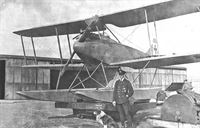 |
J.Herris - Rumpler Aircraft of WWI /Centennial Perspective/ (11) |
| Rumpler 6B1 Marine #788, the third prototype. |
 |
J.Herris - Rumpler Aircraft of WWI /Centennial Perspective/ (11) |
| Rumpler 6B1 Marine #899 was the last aircraft of the first production batch. It is seen here being hoisted by a crane for launching, something every German seaplane was equipped to do. |
 |
J.Herris - German Seaplane Fighters of WWI /Centennial Perspective/ (2) |
| Rumpler 6B1 Marine #899 after successful launch. The curved tailplane applied to production aircraft is clearly visible. The standard late-war, three-color lozenge fabric does not appear to have been used on this aircraft; instead, the upper surfaces of the wings appear to be sprayed in two colors. On 15 May 1917 #899 was stationed at Borkum on the Flanders coast for operations over the North Sea. |
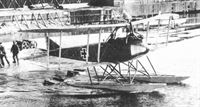 |
J.Herris - Rumpler Aircraft of WWI /Centennial Perspective/ (11) |
| Rumpler 6B1 Marine #1042 of the second production batch is launched into the water and is seen just leaving the launching dolly. This aircraft was assigned to Konstanza on May 15, 1917, suggesting this photograph was taken there. |
 |
J.Herris - Rumpler Aircraft of WWI /Centennial Perspective/ (11) |
| Rumpler 6B1 after landing, probably Marine #1045. |
 |
J.Herris - German Seaplane Fighters of WWI /Centennial Perspective/ (2) |
| Rumpler 6B1 Marine #1045 photographed in flight. This fighter was stationed at Borkum on September 13, 1917, where these photos were probably taken. |
 |
J.Herris - German Seaplane Fighters of WWI /Centennial Perspective/ (2) |
| Rumpler 6B1 Marine #1045 of the last 6B1 production batch shows its propeller spinner and streamlined nose in this air-to-air photograph. Production 6B1 aircraft had the Rumpler C.IV's curved horizontal tailplane. Surprisingly, the 6B1 was more effective on operations than either the Albatros W4 or KDW. Pilots liked its excellent handling qualities and its performance was competitive despite being derived from a two-seat reconnaissance airplane. |
 |
J.Herris - Rumpler Aircraft of WWI /Centennial Perspective/ (11) |
| The photo shows the camouflage on the upper surfaces. |
 |
J.Herris - Rumpler Aircraft of WWI /Centennial Perspective/ (11) |
| The Rumpler 6B1 was one of Germany’s most successful single-seat floatplane fighters. Here an enthusiastic naval pilot puts on an aerobatic show in a Rumpler 6B1 Marine #1045. Nicely shown are the upper surfaces which are covered in the pre-printed fabric pattern. This practice was meant to spare paint and also weight. The Rumpler 6B1 was replaced in its role by the two-seat Hansa-Brandenburg W.12 in service, but was retained in the trainer role. |
 |
J.Herris - Rumpler Aircraft of WWI /Centennial Perspective/ (11) |
| Rumpler 6B1 Marine #1045 in flight. All 6B1 fighters except the three prototypes had the curved C.IV horizontal tail. |
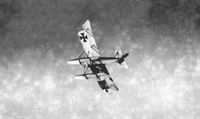 |
J.Herris - Rumpler Aircraft of WWI /Centennial Perspective/ (11) |
| Rumpler 6B1 Marine #1045 displays its agility for the photographer. |
 |
J.Herris - Rumpler Aircraft of WWI /Centennial Perspective/ (11) |
| A Rumpler 6B1 performs for the camera. Despite being derived from a two-seat reconnaissance airplane, the 6B1 had good performance and handling and was well-liked by its pilots. A single seat Rumpler 6B2 floatplane fighter seen at its dynamic best. A lighter version of Rumpler's C I two seater and using the same 160 hp Mercedes D III, the original 6B1 entered service with the navy in July 1916, with deliveries continuing into 1917, when replaced in production by the 6B2 seen here. Just as the 6B1 had derived from the earlier C I, the 6B2 owed its genesis to that of the two seat Rumpler C IV. Overall, a total of 98 6Bs are reported to have been delivered when building ended in January 1918, comprising 43 6B1s and 55 of the 6B2 version. The top level speed of both versions was around 95mph and each carried a single, fixed, forward-firing 7.92mm Spandau. |
 |
J.Herris - Rumpler Aircraft of WWI /Centennial Perspective/ (11) |
 |
Jane's All The World Aircraft 1919 /Jane's/ |
| A Brandenburg (?) Seaplane looping over the coast. Machines of this type for a time gave the Germans the Command of the Air over the North Sea |
 |
J.Herris - Friedrichshafen Aircraft of WWI /Centennial Perspective/ (21) |
| Another duty for the patrolling FF33L floatplanes was intercepting and engaging enemy aircraft. In these frames from a propaganda film the FF33L (at left) is chasing a Rumpler 6B1 (at right) with cockades painted over its German crosses to represent an Allied aircraft. |
 |
J.Herris - Rumpler Aircraft of WWI /Centennial Perspective/ (11) |
| Rumpler 6B1 #1046 in Allied colors. |
 |
J.Herris - Rumpler Aircraft of WWI /Centennial Perspective/ (11) |
| Rumpler 6B1 W4 Marine #1051 shows its dark coloring and operational markings. The 6B1 and 6B2 had good performance despite their size and had far better handling qualities than the competing Brandenburg KDW. |
 |
J.Herris - German Seaplane Fighters of WWI /Centennial Perspective/ (2) |
| Rumpler 6B1 W4 Marine #1051 shows its dark coloring and operational markings. The 6B1 and 6B2 had good performance despite their size and had far better handling qualities than the KDW. |
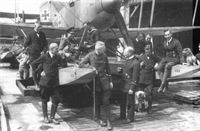 |
J.Herris - Rumpler Aircraft of WWI /Centennial Perspective/ (11) |
| Rumpler 6B1 Marine #1059 serves as a backdrop for a group photograph; unfortunately, the identities of the men and dogs are not known. Either this is a very informal photograph or the photographer made this shot while setting up for the formal portrait. The Marine Number has been painted in the side of both floats to identify the aircraft, and the Axial propeller has a metal tip to reduce erosion from spray. Aviators seem to like dogs. |
 |
J.Herris - Rumpler Aircraft of WWI /Centennial Perspective/ (11) |
| Rumpler 6B2 floatplanes 1439, 1062, 1063, and 1194 are lined up at either Kiel Holtenau or further east at one of the Baltic Seeflugstationen (naval air stations). Marine #1439 carries a large white circle as a tactical identification marking, while #1062 carries two white circles and #1063 carries three white circles. |
 |
J.Herris - Rumpler Aircraft of WWI /Centennial Perspective/ (11) |
| Rumpler 6B2 Marine #1066 was from the 6B2 pre-production batch. From the rear it is difficult to tell the 6B1 from the 6B2. Although the 6B2 was designed to carry two machine guns, only about half the aircraft actually had two guns. |
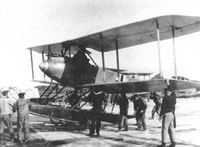 |
J.Herris - Rumpler Aircraft of WWI /Centennial Perspective/ (11) |
| This Rumpler 6B1 has been repainted in the late, straight-sided national insignia specified by the Navy on March 30, 1918. It is being readied for a training flight at Putzig naval air station. |
 |
J.Herris - German Seaplane Fighters of WWI /Centennial Perspective/ (2) |
| This Rumpler 6B1 has been repainted in the late, straight-sided national insignia specified by the Navy on March 30, 1918. It is being readied for a training flight at Putzig naval air station. |
 |
J.Herris - German Seaplane Fighters of WWI /Centennial Perspective/ (2) |
| Rumpler 6B1 W4 Marine #1189 was from the first 6B2 production batch. Its lack of propeller spinner was due to research to improve the Rumpler C.IV series that showed a streamlined nose without spinner had less drag. This made the 6B2 14 km/h faster than the similarly-powered 6B1, a significant improvement for such an apparently minor change. Here is is shown on its beaching gear at Seeflugstation Puntisella on July 9, 1918, in Austro-Hungarian service. Rumpler continued development of the 6B1 into the 6B2, which had some modifications based on Rumpler's development of their C.IV reconnaissance plane, including deletion of the spinner, which actually reduced drag and made the airplane faster. Designed to carry two guns instead of the one fitted to the 6B1, about half the production aircraft had only one gun. Both the 6B1 and 6B2 used the 160 hp Mercedes D.III engine. The 6B2 saw limited service because, by the time it was in production, the Brandenburg W12 two-seat floatplane fighter had proven to be a tremendous success on operations and was strongly preferred. |
 |
J.Herris - Rumpler Aircraft of WWI /Centennial Perspective/ (11) |
| Austro-Hungarian Rumpler 6B2 E3 (formerly Marine #1090) is moored next to the officers' mess at Igalo naval air station. The upper surfaces of the wings are in the German naval three-color printed camouflage fabric, but unusually there are no national insignia on the upper wings. |
 |
J.Herris - German Seaplane Fighters of WWI /Centennial Perspective/ (2) |
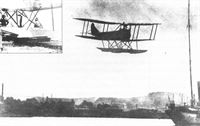 |
J.Herris - Rumpler Aircraft of WWI /Centennial Perspective/ (11) |
| An Austro-Hungarian Rumpler 6B2 flies over the harbor at Trieste. |
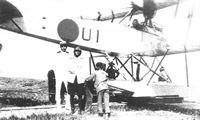 |
J.Herris - Rumpler Aircraft of WWI /Centennial Perspective/ (11) |
| Rumpler 6B2 in post-war Dutch service. |
 |
J.Herris - Rumpler Aircraft of WWI /Centennial Perspective/ (11) |
 |
J.Herris - Rumpler Aircraft of WWI /Centennial Perspective/ (11) |
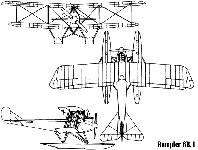 |
В.Кондратьев - Самолеты первой мировой войны |
 |
W.Green, G.Swanborough - The Complete Book of Fighters |
| The Rumpler 6B 1 (shown) and similar 6B 2 were ordered in quantity after prototype test. |
 |
J.Herris - Rumpler Aircraft of WWI /Centennial Perspective/ (11) |
| Rumpler 6B1 |
 |
J.Herris - Rumpler Aircraft of WWI /Centennial Perspective/ (11) |
| Rumpler 6B1 |
 |
J.Herris - Rumpler Aircraft of WWI /Centennial Perspective/ (11) |
| Rumpler 6B1 |
 |
J.Herris - Rumpler Aircraft of WWI /Centennial Perspective/ (11) |
| Rumpler 6B1 |
 |
J.Herris - Rumpler Aircraft of WWI /Centennial Perspective/ (11) |
| Rumpler 6B2 |
 |
J.Herris - German Seaplane Fighters of WWI /Centennial Perspective/ (2) |
| Rumpler 6B2 |
 |
J.Herris - Rumpler Aircraft of WWI /Centennial Perspective/ (11) |
| Rumpler 6B2 |
 |
J.Herris - German Seaplane Fighters of WWI /Centennial Perspective/ (2) |
| Rumpler 6B2 |
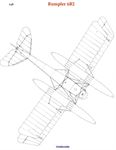 |
J.Herris - Rumpler Aircraft of WWI /Centennial Perspective/ (11) |
| Rumpler 6B2 |